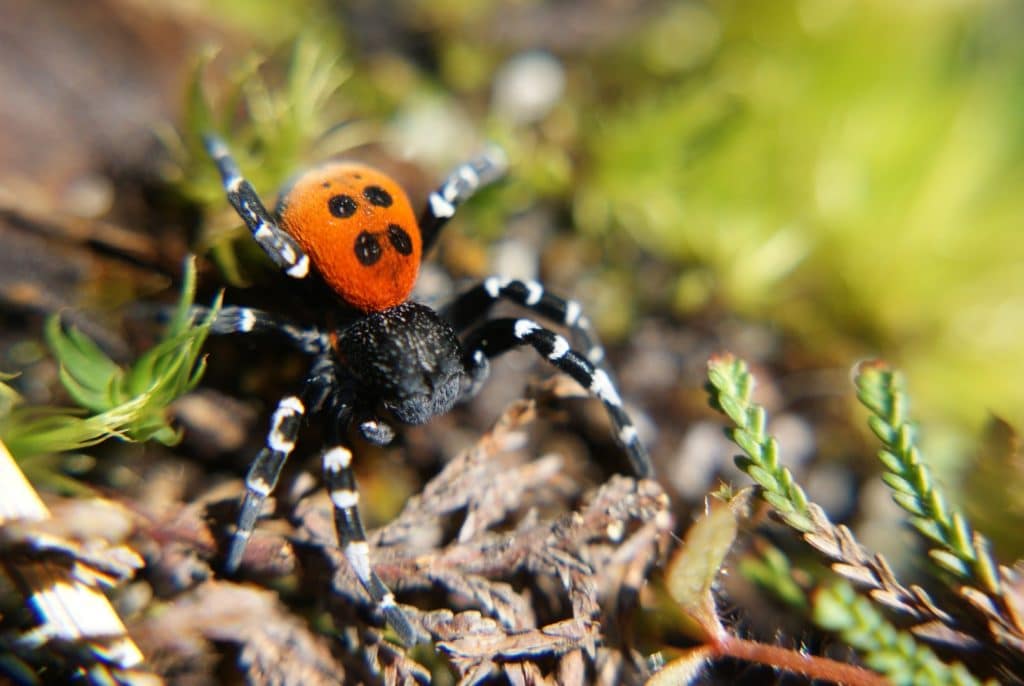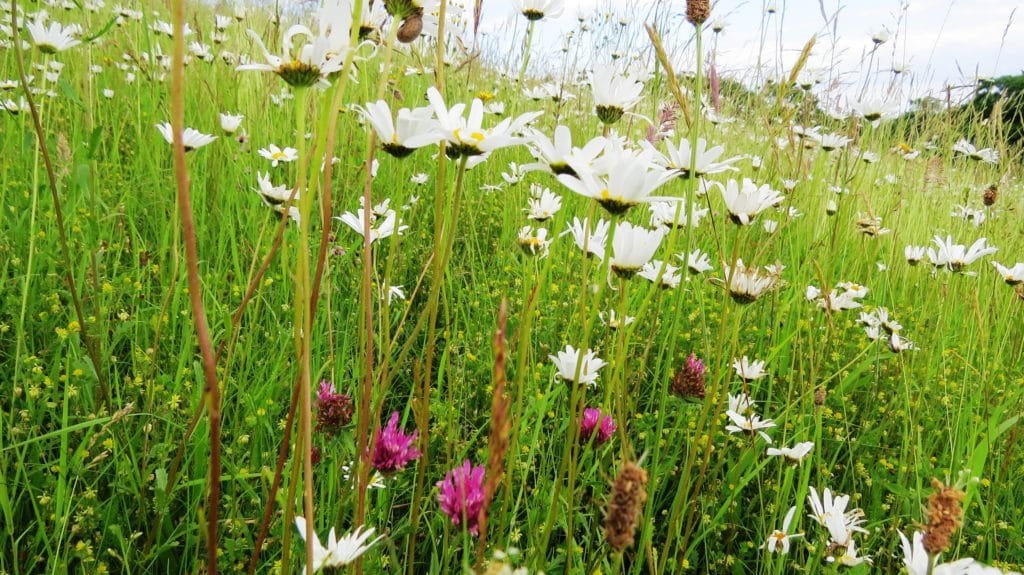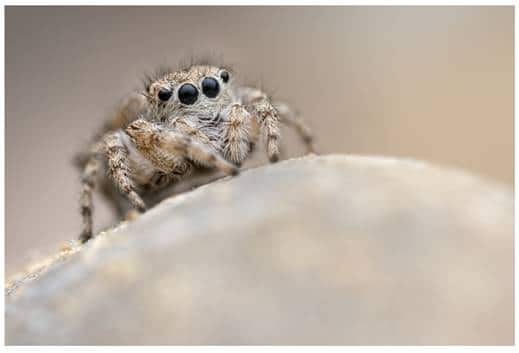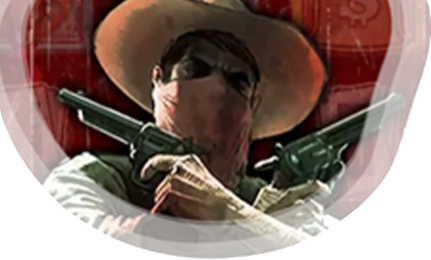Buglife Interview
With increased human impact on the environment has come a loss of many bug species and a threat to remaining ones. We spoke to Buglife about what this could mean for humans and the planet and how to stop it.
Turns out these tiny creatures might be more important for the world’s ecosystems than most other species .
Listen here or find us on your favorite podcast app.
September 27, 2020
Buglife: Re-Evaluate How You Feel About Bugs



Bugs help us. Now let’s return the favour.
Bugs aren’t cuddly and cute like puppies and pandas; but they do an awful lot of behind the scenes work for us and we’ve learnt from them too.
One in three mouthfuls we eat every day depends on pollination, something bugs do for us. If that stopped, we’d lose most fruit and veg - and chocolate - and be left eating mainly potatoes and grasses. We’d also lose salmon and other freshwater fish that feed off them and we’d miss out on gaining more valuable knowledge, such as how to make paper from wood, something the paper wasp showed us; and there could be an awful lot of carcasses lying around, with no bugs to take care of them.
With the increase of human impact on the environment has come a loss of many bug species and a threat to many of the remaining ones. If things don’t change we could be losing up to 40% of bug species by 2050.
So how can we stop the extinction of invertebrates (all insects are invertebrates)? We spoke to Buglife’s Paul Hetherington to find out. Buglife is an organisation that works hard to achieve this in the UK and we learnt a lot from them in this 30 minute interview.
The thing that stuck with us most is that bug species are often unable to migrate when they need to for survival and we can actually do a lot to help them. These small creatures are very sensitive to temperature changes and with the change of seasons and the planet getting hotter, they need to be able to move. Far too often though, the lovely wildflower environments they thrive in are getting replaced by roads, cities and monoculture landscapes. Being so small, they don’t need an awful lot of land but they do need to be able to get from one place to another to survive, and these large obstacles means they simply can’t. We humans can actually provide them back with that lost connectivity.
Buglife has conducted some amazing research and found how to do this, whilst requiring a minimum amount of extra habitat, by creating insect pathways, also known as B-lines. You can learn all about this on their B-line project specific page. For those of you living in the UK, you can find out if you’re on a B-line! If you are, then growing or potting a few simple plants could be enough to fill in those connectivity gaps.
There is a lot more you can do if you live in the UK such as following and supporting lobbying work Buglife does to save wild landscapes of critical value. Visit Buglife to learn more about their work and consider joining as a member.
Finally, re-evaluate what you think about bugs. Most bugs aren’t dangerous. Kids love them until the fear and ’yuck’ factor kick in!
Great.com is an innovative charity project working to move money from the online casino industry towards initiatives focused on preventing climate change. So far, Great.com has generated donations of over $1.3 million. This is done by competing with casinos in Google search rankings for online gaming signups coming from search terms such as "online casino New Jersey" and "online casino bonus". The profits this generates are then donated to causes working to stop global warming, rather than being reinvested into the casino industry.
[00:00:00] In this podcast, experience great.com with organizations and experts who are dedicated to solving the most pressing problems in the world today. Our guest is BugLife and Paul Heatherington, who is the fundraiser and communications director of Buglife. So I want to say welcome, Paul, to this podcast.
[00:00:23] Thanks for welcome along. I’m really looking forward to chatting with you.
[00:00:28] Yes, it’s it’s an important topic today because my assumption here is that if we just straight jump into the topic of bugs connected to the environment, so if you talk about the climate change to solving that, my assumption is the bugs is often neglected in the whole picture. Would that be my assumption?
[00:00:50] Yeah, it is very much the case, unfortunately. And it’s also quite difficult to get people to think about bugs because they’re not cute and cuddly like pandas. And it’s very easy to raise money, to save pandas, to save tigers, bugs for the sort of yuck factor for a lot of people. And they are the kind of very frightened of them. But the reality is you’re not going to save the tigers or the pandas if you don’t also save the bugs because they’re right at the bottom of the food chain and everything else is dependent upon them. Even the bugs that people don’t like have a really, really important role to play, know take pollination is vitally important. Eight out of 10 of our wildflowers would disappear within a few years without pollination to help them create seed and spread one in three mouthfuls that we eat every day is dependent on pollination. So we wouldn’t starve without pollinators, but we’d have no fruit, including soft fruit. We’d have no beans, we’d have no peas. So our diet would become very monotonous and boring, basically would consist of potatoes and grasses.
[00:01:56] All right, so that kind of paint the picture here, we would could you repeat the different food alternatives that would disappear if the bugs would disappear? Just to clarify those.
[00:02:09] Basically, we would lose all fruits. We would lose all peas and beans. We would also lose things like tomatoes, aubergines, peppers, a huge array of fruit and veg would disappear, also lose things like carrots because they need pollination to create seeds, to sow new carrots. And you’d also similarly start to lose onions. You’d still get garlic because that grows from the bulbs. But yet the majority of our food and veg that we know and love would disappear. All the brassicas would as well, because again, you need seeds and without pollinators you won’t get new seeds.
[00:02:45] Yeah, that’s that’s a very high price that we are paying if we don’t take this seriously and we’re talking about basically all the food that is high on the nutrition, those many of those would just disappear because those are dependent on like a system and chocolate as well would also disappear, of course, which chocolate actually, strangely, is pollinated by one of the midges as everyone goes on holiday places up in the northern parts of our hemisphere.
[00:03:20] They complain about midges all the time. Well, if it wasn’t for midges, there’d be no chocolate because they are the pollinators of chocolate.
[00:03:28] Yeah, to keep the seriousness here like that, that is now I cannot see a world living without chocolate. Personally, when I get so many people would feel the same. But to keep the seriousness end up there is I read some numbers.
Half a million spee insects are about to get the extent extinct. Is that how big this problem is and how what does that mean?
[00:03:55] So many people by the year 2050, if things don’t change, we could be losing, getting on for 40 percent of the insect species on this planet. And that’s a tremendous number of species because there are more species of insect on this planet than there are species of anything else, plants or whatever. In fact, the number of species of insect on the planet make up something around 66 percent. That’s two thirds of the known species that we have on our planet are invertebrates.
[00:04:33] So there’s many more than just a couple hundred thousand, there’s literally millions of all facing extinction in 30 years that you’re saying 30 years, within 30 years time, that that is the way the trends are heading.
[00:04:49] If you look at sort of recording of, you know, numbers of species and number of species that are a threat of being becoming extinct and some of them are, well, loved species, there’s quite a few species of bumblebee. For instance, most people love bumblebees are on that right list of species facing extinction.
[00:05:08] And how much is the BS in this context now we can say that this is a big problem. How much is this topic being taken on being addressed in the bigger picture on climate change? Some bigger problems.
[00:05:27] I mean, it is essential that climate change is thought about in terms of this because, well, bumblebees is a very good case to think about. Bumblebees basically don’t like hot climates. And if you go somewhere like the Mediterranean, you’ll find two species of bumblebees. You come up more into the northern climes such as the United Kingdom. We’ve got 25 species of bumblebee, and that’s because it’s a little bit cooler as it’s getting warmer. They’re trying to migrate northwards. A lot of species of bumblebee in the UK, for instance, are now only found in places like the Cairngorm. So it’s sort of, you know, getting up towards the highlands of Scotland, higher altitude, cooler temperatures. But we’ve got others that are now trapped down in the south, places like the Thames Gateway around the London area, because there’s no longer the connectivity for them to be able to migrate. So this is another huge issue that is facing a lot of insects and other animals as well, is how do you get from A to B when there is no connecting root there anymore? Habitat fragmentation, the roads where they usually transport themselves has been blocked by human activity and that we’re just saying, yeah, towns are being built, roads are being built, airports have been built, and also monoculture farmland has come into play. And prairie style farming, where you get bigger and bigger fields and hedgerows disappeared because, you know. It’s not just about wildflowers for for insects like hedgerows play an important role as well, and there’s a lot of flowering in hedgerows, particularly early in the year. So all of these things are important, but these are all the things that kind of get ripped out for fields of wheat, fields of barley, fields of sugarbeet that have absolutely no value to pollinators. And it’s a sad fact now that very often in an urban environment, you’ll find a greater variety of species and a greater abundance of species than you will in the rural areas.
[00:07:28] I’m switching a little bit here, but still staying on the topic of why it’s so hard to the bugs are so small in context, it’s very hard to see them with the eye. And people are also afraid, I guess. I think you mentioned that people are afraid of bugs like spiders. Is that also a problem here to why we haven’t? We have the situation that we’re having that there is now not so much empathy, I guess, towards us.
[00:08:00] Well, I mean, most children actually love bugs because they’re kind of down at their level and they’ll spend ages studying them. And somewhere as people grow up, that does seem to be this kind of fear factor gets into people and they start becoming frightened of bugs and that, you know, it doesn’t help with their preservation at all. And but also they tend to be taken for granted. You go outside and you just kind of used to hearing the buzz of bees and flies and things going on. And it’s only when they’re no longer there that you kind of notice, oh, it’s gone strangely quiet out here. It’s a bit like, well, most of us have been through sort of lockdown periods in our different countries. And so people are not we’re going to be less traveled, has been less airplanes. And we’ve noticed that it’s much, much quieter. Imagine how much quieter it would seem outside if you didn’t have crickets, cicadas, bees, flies, all of those things buzzing around that just that generic background noise that prevents us living in deathly silence, but we don’t tend to notice it until it’s gone. And that’s also part of the problem. But, yeah, there’s there’s a lot of fear because in some countries, certain bugs are very, very dangerous, particularly some spiders in places like Australasia in there. And for some reason, it seems to have got ingrained into people that they’re dangerous. But for most of us, there’s very little danger involved in it.
[00:09:24] I mean, another one that gets a really bad press is the WASP. People hate us. People are frightened of WASP. People run away from them. But WASPs play a very, very important role in our ecosystem. And it’s only really for about one month of the year when they are a problem of any kind people. The rest the time, they’re very, very
beneficial to us. They go around and they collect up grubs and caterpillars and larvae, which will otherwise be destroying our plants and our crops, and they feed them to their young. We’ve learnt an awful lot from the way they construct their nests by making paper from wood. It was first thing paper made from wood that tricked people off that you can make paper from wood. And that’s where our ability to make paper came from. It came from studying wasps so incredibly useful and just for about a month of the year when unfortunately they are facing effectively mass unemployment. The well role of the worker WASP is to go out, bring back food to feed the colony, to particularly to feed the new embryonic queens who are larval grubs there. They go out, they catch a caterpillar, they bring it in, they feed it to the grub. The crab excretes the equivalent of wasp honey, a little sweet substance as a reward. So they get hooked on this sweet substance and they’ve got a job for life. And then at some point during the year, it’s usually sometime in August in in the Northern Hemisphere at least, probably it’s a different time of year in the Southern Hemisphere.
[00:10:49] The all of these larvae have finished developing into Queens and they fly the nest off to feed themselves, find somewhere to hibernate over winter. I no longer have a purpose as a worker, WASP. I haven’t got anything to do. Also, I’ve become addicted to this sweet substance and it’s no longer there. So I go out looking for it. And this is when I become a problem to humans because I start finding they’ve got it and I start taking it from them. And the other problem that WASPs have is sadly, they are bad drunks. And that is the time of year when there’s a lot of ripe fruit around and a lot of it drops off the trees and you’ll often see wasps landing on it and chewing on it. But the reality is, once fruit is ripe, it begins to ferment. Now, we as people would have to eat far more than we could ever manage to get inners to get anywhere near drunk on it. WASPs are very, very small creatures, so they can get drunk quite easily. And yeah, they are bad drunks. They’re bad drunks. They’re facing mass unemployment and they’re looking for a sweet drug that they are addicted to that they can’t get anymore. And that’s why they become a problem. But because of that, people hate them.
[00:11:58] Such a strong change in perspective to put ourselves in the minds position of the Welspun, they’re bad drunks and they’re facing mass unemployment, they’re really what I was missing there with empathy. I start to feel more empathy, thanks to you. You’re sharing that now?
[00:12:17] I think that because I mean, I think that’s one of the things, because insects are so weird and alien looking to human beings that it’s very hard to empathize with them. But the reality is we all live on this planet together and we all share a lot of characteristics. And if you look at it, you can kind of see how these things work. And some of the societies, insect societies like the ant society, where they all work for the common good, you know, it’s almost close to Karl Marx, his dream of how people would work, although, of course, you do have the authority of the queen and in charge of it all. But the point is, the way they work and they interact and they do it for the benefit of the colony, not the benefit of the individuals. There’s an awful lot of interesting things go on in the in the world of insects.
[00:13:06] Hmm.
[00:13:10] If we then kind of shift focus from the the courser here, which is saving bugs for both benefits of humans, but also for just empathy with some bugs, the third equal kind of rights to live us, our species, then you are you’ve been dedicated yourself now to an organization called Buglife and you’re located in the U.K. Could you tell us more about what is it that you guys are doing?
[00:13:48] So Buglife is one of only two organizations in the whole world that try and do things for all invertebrates. You’ll find the odd place that’ll do it for the butterflies or sometimes for other pollinators. But we actually work for all invertebrates and we work in several different ways. We do practical on the ground conservation work, for instance, trying to recreate pollinator connectivity across the countryside. So we’ve got a huge project called Beelines, which we’ve started where we’ve been mapping. What you do is you find the places from Recall’s where you’ve got good populations of pollinators. You then get local people together to say, are these still existent? How do we best join up the dots and then you join up the dots. Now, the rationale behind that is in the United Kingdom, since the Second World War, we have lost 97 percent of our wild flower rich areas. Now, that’s a massive amount of land. It’s actually an area about one and a half times the size of the country, Wales. That’s how much land has been lost in that time. And of course, because of that, you’ve lost that connectivity. So you you’ve got lovely, isolated little pockets, which are really good for different insects, but they can’t get from A to B, and when one of those pockets disappears, that’s it. They can’t get anywhere. They will die out. We’re fighting a big case around that at the moment. Swanscombe Marshes, a site. It’s a brownfield site on the Thames Gateway and it has got 250 endangered species of insect have already been identified on this site as living there, including some of our rarest bees and also one of our rarest spiders, the distinguished jumping spider. Fantastic name, isn’t it, that is found there. And on one other site, also in the Thames Gateway, they are the only places in the United Kingdom you’ll find that creature.
[00:15:51] That site is under threat to be turned into an amusement park. They want to develop into an amusement park and BugLife is taking the campaign forward. We’re fighting to save. And this kind of leads onto some of the other things we do. So, yes, we’ve got this thing. We’ve done the mapping. We then go out. We work in partnership with others to create those wildflower corridors, to link these places back up. But we also go we campaign to save sites of big importance for invertebrates that are under threat. We also carry out species specific work where you’ve got a species that’s at risk of extinction, something like the Lady Bird Spider, for instance, which when we started work on it, was found on one small site, not much bigger than an average living room. That was the area occupied in the whole United Kingdom on a heathland. And heathlands, of course, are very prone to fire risk, aren’t they? And since we’ve been working on it, we’ve gradually being translocating some surplus parts of the population. And it’s now on 18 sites, which is really good news. It’s particularly good news because about two months ago there was a fire at the initial site and it wiped out about a third of the site. So if that work hadn’t happened, that spider would be really critically endangered now. And we lobby governments, obviously, to to make change not just in the UK. We do a lot of lobbying at Europe. We have a seat on the European Habitats Forum, for instance, representing invertebrates on that and advising on things like the European Pollinator Strategy that’s recently come out.
[00:17:30] Hmm.
[00:17:31] There was many things there you talked about, it was interesting to see let me see if I can connect this now. And there’s a question here that I wonder. Still, you said that one of the big projects they’re doing is called beelines, and that is connecting habitat areas of between. So it’s almost like a bridge. And when people are Yamanote, they’re building amusement parks and building constructions. We’re cutting off those bridges. And it seemed to me that you said at. If those bridges get destroyed, then they die. How could you connect that elaborate more on why are these bridges so important for them to the box? So what happens?
[00:18:18] There are a number of reasons for decline, particularly of insects. And probably the key one is habitat loss. And alongside that habitat loss is the loss of connectivity between habitats. Because, you know, if you got one great habitat and it’s full and teeming with life, but it’s so remote from any other habitat. If something happens that that habitat, there’s nowhere for the things to go. So they will die, even though if they are able to move, they can’t move because there’s nowhere to move to. And that’s the big problem they face. And, you know, beelines network is it’s like a road network, if you like, for insects. We use beelines because we use bees and pollinators champions really of insects because people like them. But it’s all insects really there to enable them to be able to move from A to B. And so it’s like a roadmap for them. The difference being, if I build a road the moment my road comes to an end, my car has to stop to make a beeline active. You basically need to start filling in and stepping stones. And once around, about 10 percent of it is filled in with stepping stones. It will start to be active. The more you fill in, the better you will be. But even just getting 10 percent filled in will make a huge difference. And there’s a lot of science behind this as well. We spent a long time planning this has been in the offing since 2012. Basically by delivering pollinator habitats along the beelines, it requires creation of one tenth of the amount of extra habitat that needed to be created. It was just randomly dotted around the countryside and the urban landscape. So you’re actually saving a lot of land that can then be used for productive purposes such as agriculture that would otherwise be lost to create the same effect without following the scientific route.
[00:20:17] I almost see the more climate change that’s going to change our weather and our the temperatures we’re talking about people is going to get their homes flooded. So then people need to move. And I see the same images happening them for insects that there are going to be changes for the habitats and they are going to be forced to move, but they can’t move. So that makes sense why that would be a big threat to humanity building more. There is more changes in the atmosphere and on the planet going on.
[00:20:54] And climate change has a massive impact on an awful lot of insects because they can be very, very temperature sensitive. For instance, mayflies, which they lay their eggs in the water, freshwater streams. One of my colleagues is an expert in Mayflies, and he’s been recording them and measuring them over the last 20 years. And during that time, he has noticed that where you find the larva in the water system has moved about three miles upstream. And that’s all about the fact that the slight increase in temperature has increased the temperature of the water. And it’s now too hot for the Mayflies. They’re having to move further and further upstream. Now, if this kind of thing continues, then you are looking at you’re only going to be finding Mayflies Heights of perhaps over a thousand meters, which means you’re going to be wiping out from huge parts of the country. And you might say, well, why is that matter? Well, amongst other things, Mayflies is one of the biggest feed sources for most of our freshwater fish, things like salmon, which people love to eat. They all depend on things like mayflies because particularly the actual adult has a very, very short lifespan. And then they drop back dead onto the ground or into the water. And that’s when they get eaten by death in the thousands, by fish and by birds on land. So hugely important food source at a time when breeding is going on in other parts of the animal kingdom. And, you know, we are risking taking those out from huge areas if we don’t do something about the climate change.
[00:22:29] So that’s an example on how everything is connected here and how one impact from climate change impacting bogs impacting back to the health system. So we’re going to. It’s time for us to start Raftis call short into Europe, and I want to make sure that we people understand what to do from here. So could you tell people listening? What would you suggest people look up or if people donate money towards the cause? How does that work?
[00:23:09] Well, first off, I would say, you know, you might be very depressed by what we’ve just been talking about, but you can actually make a really big difference in quite a small space for insects and bugs. So even if you don’t have a garden, if you’ve got a window box or a balcony, if you put a few of the right plants in there, you could be helping a pollinator move from one place to another, for instance. So there’s lots of little things we can all do in our lives. You can also look at your carbon footprint and try and reduce your carbon footprint. Look at lights in particular, and particularly external lights and internal lights. Think about drawing the curtains when they’re on. Artificial lights have a huge impact on bugs. Things like glow worms are in huge decline because they can no longer find mates because of all the background light that we create. So be mindful of what you’re doing and how it might be impacting. So those are all little steps that we can all take. Other things that would be really good for you to do is to get involved in organisations that do things for bugs. And one of those things you can do is you could actually join Bagli as an organisation or you could donate to Buglife. And 97 percent of the income that comes to BugLife is actually spent on conservation work and the other three percent gets spent on administration and on fundraising. Of course, without fundraising, there wouldn’t be more money coming in. So it is very, very good value. The best way to do it is to go to the BugLife website, which is just bug life dog dot UK. But we can all do our own bit and every little bit adds together to make one big movement.
[00:24:55] I believe that the word that you can do what we can to to save the small cowpox for. Oh, yeah. Which are so easily kind of forgotten here. And I went to the website myself and I saw that you actually have put up maps where you can see the difference. And it seems to me that you have identified those connection points.
[00:25:19] So if people want to see how does that look like one, I guess that’s part of the work that you’re doing mapping out, which would be if you’re living right now in the U.K. and you want to know if you were in an important spot, is that could that be more important than to see that from those maps?
[00:25:39] Yes, there’s two really good to look at maps on the website. One is the Beelines Network, and you can go in and have a look at that. And because of that, you can increase the scale of the map. You can go right down to where where’s my house and find out if you’re living on a beeline or if you’re allotments on a B line. And if it is, you can make a big difference. I’m very fortunate. I had nothing to do with the drawing up of the beelines, but both my house and my allotment and my office are all sitting on a beeline because beelines don’t just go across the countryside, they also go through urban areas. So that is well worth looking at. The other maps that are on there that are really interesting are we map to what are called the important invertebrate areas. So these are areas of the country that are very, very important for invertebrates. Usually on the bases, they’ve got at least one and usually quite a number of very, very rare species on those sites. And and again, you can have a look at that map and see if you’re on it. And soon we’ll be putting up more detailed mapping. So at the moment, you’ve got big scale maps. They’re down to about a 10 hectare square. The finer scale mapping will be taking it down as kind of field scale.
[00:26:48] So you can really see where these important bugs are. And that’s got two purposes. One is it’s a great tool, hopefully, to inform planners and people to avoid building in those areas, which is also a great tool for people. Think about, wow, look, this is really important, very rare thing lives here and there’s a bit more of it here. And I live in between them. So if I do the right things and there will be management fees and say what you need, say, for instance, if it’s some lovely being called the wormwood moonshiner that you find in the bricks of England so well, that lives on a plant called Wormwood. So if you put some wormwood bushes in somewhere between the two spots, you might be starting to create that bridge and help them to move around and therefore reduce the likelihood of that particular species becoming extinct. So there’s all kinds of things you can do by looking at it. But even if you’re not in one of those areas, there’s still plenty you can do. And it might be that you’re not in one of those areas because, for instance, there are large parts of the country which have just been poorly recorded. For what species are there? Virtually all of the Midlands has got nothing in it. But that might just be because there haven’t been people recording them.
[00:28:01] Thank you very much, Paul, for taking time. You have helped me personally to understand bugs, where a few more empathy and more awareness on the importance of what we actually can what I can do.
[00:28:13] So thank you for that. Is there anything else that you would like to end this with? I usually ask, is there anything that you would like for more people to understand?
[00:28:26] I would really just like people to take the time to think about bugs and re-evaluate how you feel about bugs because, you know, try and get rid of that yuck factor, thinking in your head and think about all the important things they do to us, be it pollination, the soil services that they have, you know, breaking down of things in our soil to return it to nutrients. If it wasn’t for things like dung beetles and blowflies. Imagine the problem when you walked outside because nothing would be clearing up all of the feces that’s been dropped over all the years.
[00:29:01] It would be horrible to go out. And similarly, there are other creatures that are responsible for disposing of bodies that are lying around. Otherwise, again, we just have umpteen dead bodies and carcasses still lying around out there. They perform such important and useful services for us that we just take for granted because they happen without them, those things won’t happen. And even if humans could survive, our lives would be very, very different. They are possibly the most important thing on the planet for our lives to function as they are. Re-evaluate what you think about bugs.
END OF TRANSCRIPT



